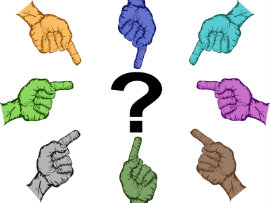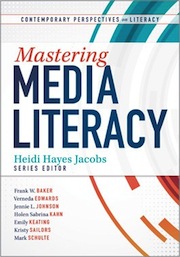Close Reading and What It Means for Media Literacy

The Common Core Standards call for students to become detectives: learning how to observe closely, locate evidence, look for clues, and ask the right questions. But today many students don’t ask questions at all.
In my work as a media literacy consultant, I like to use media texts (and youth media) as the jumping off point to get students asking questions.
A photograph from the morning’s news can be coupled with the question “what do you see?” A snippet from a movie can be used to teach the language of film by asking “why do you think the director put the camera there?” A magazine cover featuring the latest celebrity can be used to get students to recognize layout, design, color, font, facial expression, body language and much more.
As I travel around the United States, conducting professional development workshops with teachers, I continually hear the same refrain: our students tend to believe everything they see, read and hear in the media and on the Internet. Apparently many educators have not yet been trained to use materials from the news and popular media as catalysts to critical inquiry. Many are uncomfortable with the idea, in fact. That’s where I come in.
Close reading of print is something that is taught in colleges of education and in professional development sessions, but close reading of non-print (radio, photography, film, video) “texts” is seldom part of this professional learning process.
That’s unfortunate because, as we all know, our students are very much drawn to this kind of media. It surrounds them. And because many now carry mobile phones or e-tablets with them, they have their media close at hand all of the time.
Some ideas about close reading of media
One way to get started is to ask students to bring in a favorite photo, magazine, advertisement or movie. There are many ways to use these texts in a classroom activity or exercise. Depending on the media text, a variety of questions can be posed.
In media literacy education, these general questions are most often recommended:

• why was this message created: what is its purpose?
• how was the message disseminated/distributed?
• for what audience is this message designed to reach?
• what techniques are used to attract your attention?
• who or what was omitted from the message and why?
• who benefits from the message?
Getting students in the habit of questioning media texts helps them begin to become critical thinkers and viewers. Oftentimes one question leads to another and another. Unanswered questions often lead to research which can also be revealing (and skill-building).
There are many more critical thinking/viewing questions. See the list I created here.
The deconstruction process
Close reading is a deconstruction process. Media literacy also involves deconstructing the texts one encounters, whether inside or outside the classroom.
When close reading a media text, you deconstruct (take apart) the text by analyzing the way different elements are used to create meaning. In order to ‘close read’ a text, it is necessary to understand the particular media language used.” TKI/New Zealand
In future MiddleWeb posts, I will introduce three media texts: a photograph, an advertisement, and a moving image. Each text will be accompanied by a deconstruction example.
In the meantime, I hope you might take a look at all of the resources I’ve created at The Media Literacy Clearinghouse website. There you will find many examples and resources to help get you started on the road to helping your students become more critical thinkers, observant viewers and competent communicators in a 21st century world immersed in image-laden texts.
Media language encompasses all the ways in which media text is constructed to communicate with an audience through verbal, visual, aural language (e.g. lighting, layout, shots, typography, images, sound).” New Zealand Qualifications Authority
In his 2nd installment, Frank Baker writes about the connections between close reading and visual literacy.
Part 2: Close Reading: Visual Literacy through Photography
Part 3: Close Reading of Advertising Promotes Critical Thinking
Part 4: How to Close-Read the Language of Film



































I’m not sure I would have aligned close reading with deconstruction as the latter places emphasis on the person ‘reading.’ Close reading arises alongside an ideology in which the reader as critical role is largely absent. It’s the primacy of the text that seems to matter.
I have been teaching with media, now digital literacy, for over 40 years as well as being a literacy integration specialist. Not sure if I fully understand the term “Close Reading” as being anything different than focusing and guiding student attention to what is important in text or non-text. An underdeveloped skill in the age of texting is the ability to “Separate the wheat from the chaff”. Digital media teaching is similar to teaching with text in that previewing guides and graphic organizers need to be used to achieve “Close Reading”.
Jim while i respect you, an educator does NOT need to employ a graphic organizer in order to do “close reading.”..with it is with print or non-print. In fact those can oftentimes get in the way of the goal.